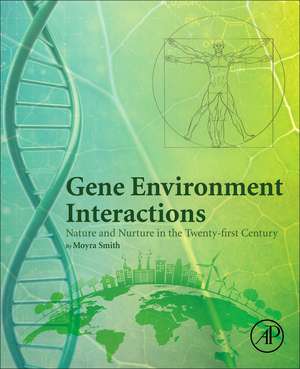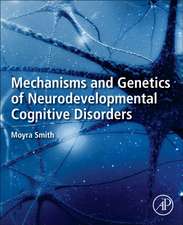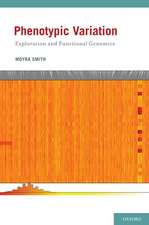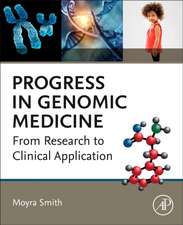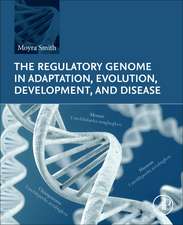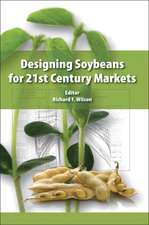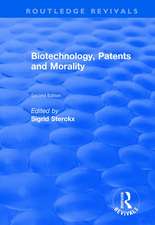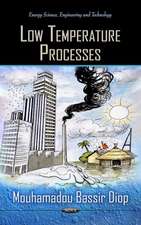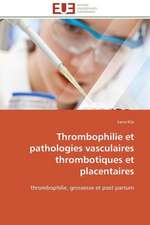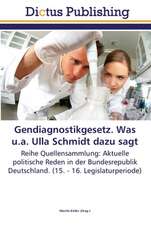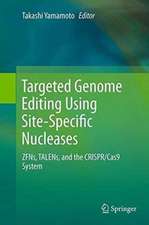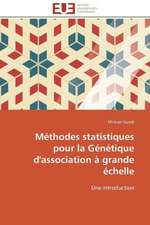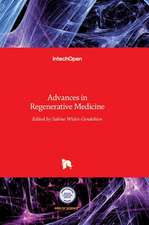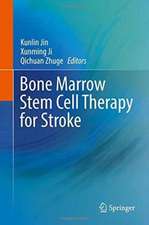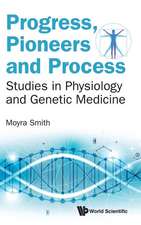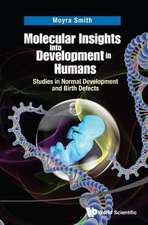Gene Environment Interactions: Nature and Nurture in the Twenty-first Century
Autor Moyra Smithen Limba Engleză Paperback – 14 ian 2020
Later chapters illuminate how our new understanding of gene environment interactions are driving advances in precision medicine and novel treatments. In addition, the book's author shares strategies to support clinical translation of these scientific findings to improve heath literacy among the general population.
- Offers a thorough, interdisciplinary discussion on recent revelations from gene environment interaction studies
- Illuminates environmental factors affecting disease-gene etiology and treatment
- Supports the clinical translation of gene environment interaction findings into novel therapeutics and precision medicine
Preț: 646.63 lei
Preț vechi: 1030.21 lei
-37% Nou
Puncte Express: 970
Preț estimativ în valută:
123.76€ • 133.59$ • 103.77£
123.76€ • 133.59$ • 103.77£
Carte tipărită la comandă
Livrare economică 12-26 aprilie
Preluare comenzi: 021 569.72.76
Specificații
ISBN-13: 9780128196137
ISBN-10: 0128196130
Pagini: 438
Ilustrații: 35 illustrations
Dimensiuni: 191 x 235 mm
Greutate: 0.73 kg
Editura: ELSEVIER SCIENCE
ISBN-10: 0128196130
Pagini: 438
Ilustrații: 35 illustrations
Dimensiuni: 191 x 235 mm
Greutate: 0.73 kg
Editura: ELSEVIER SCIENCE
Public țintă
Human geneticists; human genomicists; translational researchers in medical genetics, genomic medicine, epigenetics, neuroscience, toxicology, public health, and environmental science; life science researchers; developmental biologists; pharmacologists in industry and academiaCuprins
1. Interacting with the environment receiving and interpreting signals2. Environment as Provider3. Human Evolution and adaptations to environments and to pathogen encounters4. Genetic mechanisms in environmental adaptations 5. Epigenetics and the regulatory genome6. The microbiome: The external life forms within7. Human development, behaviors, impacts of environment and genetic variations8. Joint Roles of Genes and Environment in etiology of specific diseases9. Personalized Precision Medicine10. Identifying and mitigating effects of Harmful factors in the Intrinsic or Extrinsic Environment11. Questions relating to climate change
Recenzii
"The author is a pediatric and medical geneticist who has compiled an encyclopedic collection of information on gene-environment interactions. Her book contains 12 lengthy chapters, each with about 50 to 80 useful references on the topics she discusses. I was impressed by the immense amount of reading the author did in order to put this book together. Smith stresses recent findings and not the historical paths leading up to the findings, making this a useful reference for relating disorders and their variants for differential diagnosis. She identifies hundreds of genes of significance for developmental and systemic disorders and ties them togetherin her 12 chapters. Her tables of genes involved in major illnesses and systemic failures will be useful for genetic counselors and for those teaching human or medical genetics courses. Those teaching genetics will find the references especially helpful for backing up their generalizations with numerous facts that provide support and detail." --The Quarterly Review of Biology
"There are several books on epigenetics available in the market. However, this book is extremely well done. The information presented is unique, mainly due to Dr. Smith's perspective. This is a must-read book for geneticists in general, but it is of great utility to all those interested in epigenetics. Congratulations to Dr. Smith on a job well done." --Doody
"There are several books on epigenetics available in the market. However, this book is extremely well done. The information presented is unique, mainly due to Dr. Smith's perspective. This is a must-read book for geneticists in general, but it is of great utility to all those interested in epigenetics. Congratulations to Dr. Smith on a job well done." --Doody
